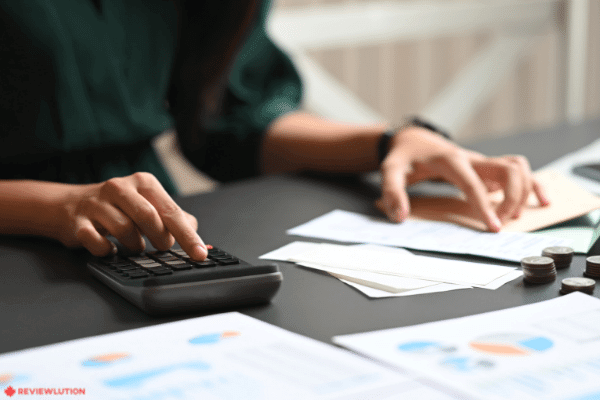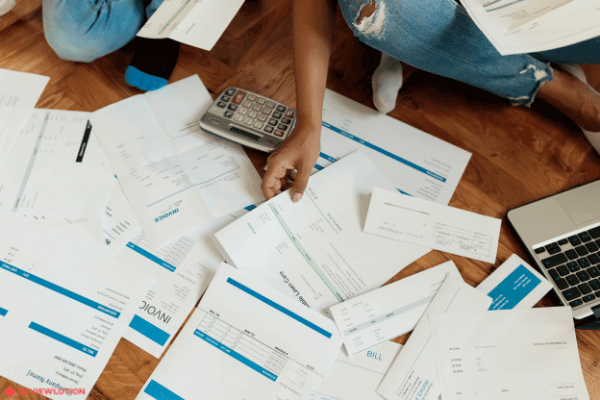Debt Forgiveness in Canada: Is It Possible?
What happens if all of a sudden you lose your job or your debts have been mounting so much that you find yourself in a dead-end situation?
Is it possible to receive debt forgiveness in Canada and if so, what’s the process?
Let’s find out as we go through our detailed guide on debt relief and the programs providing this option!
What Is Debt Forgiveness?
Debt forgiveness is the process of a creditor writing off a portion of your debt or the entire amount. Unlike debt repayment, borrowers don’t need to maintain their debt amount and pay it back.
For instance, if you’re unable to make the minimum payments on a credit card debt, the company will often choose to write off your debt as a loss instead of asking for payments you can’t provide.
Canadian Debt Forgiveness Programs
There are several Canadian debt forgiveness programs available for those who struggle to pay off their debt. Let’s break them down.
Consumer Proposal
A consumer proposal is a legally binding agreement between a creditor and a debtor that allows you to pay a portion of your credit within a certain time frame.
If you want to settle your tax debt by receiving CRA debt forgiveness the rules are that you must make a consumer proposal to the CRA.
The aim of consumer proposals is to offer consolidation of your debt and your credit score does not affect your qualification process. As a debtor, by signing up for consumer proposals you’re not subjected to any professional fees to your monthly payments and you’re discharged of any future interest rates.
The program offers debtors to pay off their consumer debt in one lump sum or make monthly payments within 5 years.
In most cases, the program will reduce a borrower’s outstanding debt by up to 80%. However, it’s important to stick to the terms of the contract. Once your debt has been settled by the time frame you and your creditor have agreed upon, your remaining debt will be forgiven.
Debt Management Program
A debt management program helps debtors to build a structured repayment plan under the guidance of a credit counselor. The program allows you to clear off your outstanding debts through a single monthly payment. Depending on how much you can afford to pay every month, the credit counselling agency will determine the length of the program.
Although the amount you borrow from the debt management program will need to be repaid, it comes with much lower interest rates, and you can qualify even with a lower credit score.
Nevertheless, a debt management program isn’t legally supported, so creditors aren’t required to take part in debt forgiveness.
Consolidation Loan
A consolidation loan enables debtors to obtain one larger loan that will help them to pay off all their other debts. So instead of paying multiple lenders, you will be paying monthly payments only for a single debt.
Even though a consolidation loan is not a debt forgiveness program, it helps you repay your debts faster and ensures that you don’t default on your repayments.
The advantage of the debt consolidation loan is that you’ll be able to repay the loan at much lower interest rates which will save you more money in return.
The program allows you to consolidate several different types of loans at once such as your student loan, car loan or any medical debts.
Luckily, we happen to have some debt consolidation solutions if you opt for this type of loan.
Debt Settlement
In a debt settlement, debtors can negotiate to repay a smaller amount than their actual loan. It is very common for people to reach out for this option when they are overwhelmed with debt collections and find it hard to manage the repayments.
A debt settlement is a good option in case of an increasing credit card debt or medical bills which can be difficult to keep afloat during financial hardship.
Bankruptcy
As a last resort, bankruptcy can help you to clear off your debts and start over. Filing for bankruptcy in Canada is completely legal and the process is regulated by the federal government.
Once you file for bankruptcy, you need to wait between 9 and 21 months to be discharged from your debts. Still, it’s worth noting that declaring bankruptcy can hurt your credit and affect your borrowing power in the future.
You can choose to declare bankruptcy and get debt forgiveness on your credit card debt, tax debt, payday loans or any other type of loan.
When it comes to student loans, the Bankruptcy and Insolvency Act states that if you haven’t been a student for the last 7 years, then your student loan will be automatically cleared off in case of bankruptcy.
When Does Debt Become Forgiven?
The debt forgiveness timeline depends on the kind of program you have signed up for.
Nevertheless, it’s easier to determine the approximate debt relief time frame if you’re under a government-sponsored debt relief program — bankruptcy or a consumer proposal.
That said, if you’re declaring bankruptcy for the first time, you can expect your debt to be cleared after 9 months. However, if you need to pay surplus income, the process can extend to 21 months.
On the other hand, if you signed a consumer proposal, your debt will be forgiven upon completion of the payment term. This can last between one and five years.
Should you not participate in a debt forgiveness program, it’s difficult to establish the exact debt relief timeline, which depends on your financial situation and the relationship with your creditor.
How do you know if your debt is forgiven?
Knowing if your debt is forgiven is not a straightforward process. Sometimes, a lender might not stick to the agreement, even if they promised you wouldn’t have to pay back your loan.
If your debt has been written off, you should receive an official note from your creditor stating that you’re no longer indebted.
Furthermore, you can either ask your lender directly or check your credit report by contacting Equifax or Transunion to see if your account has been updated as a write-off.
The most certain way of knowing you no longer owe your creditor or lender is by making regular monthly payments until you completely pay off your debt.
Conclusion
In moments of financial crisis, debt forgiveness programs offer much-needed assistance. We hope to have given you some more insight into debt forgiveness in Canada and helped you find the solution that fits your current situation and budget.
FAQ
The two officially government-ruled Canadian debt forgiveness programs are Consumer Proposals and bankruptcy. The rest act as debt relief programs, which provide debtors with financial relief for their outstanding debts.
This is a common misconception among Canadians. Namely, although the debt will disappear from your credit report after 7 years, it’s still present on your credit history.
Declaring bankruptcy will most certainly get you debt relief after 9 to 21 months. After this timeframe, your debt is automatically forgiven.
It pretty much depends on the program you chose that deals with debt forgiveness in Canada. While some only offer relief or consolidation of your other debts, only bankruptcy can get you absolute debt forgiveness.












